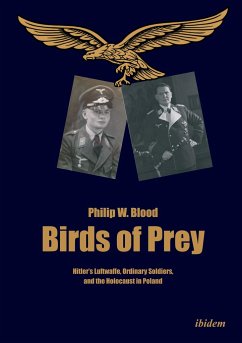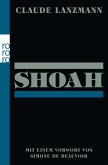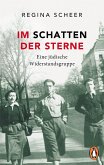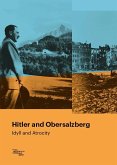'This is the smoking gun of all your research.'Professor Richard E. Holmes (18 February 2001).Birds of Prey is a microhistory of the Nazi occupation of Bialowieza Forest, Poland's national park. The narrative stretches from Göring's palatial lifestyle to the common soldier on the ground killing Jews, partisans, and civilians. Based entirely on previously unpublished sources, the book is the synthesis of six areas of research: Hitler's Luftwaffe, the hunt and environmental history, military geography, Colonialism and Nazi Lebensraum, the Holocaust, and the war in the East. By weaving together a narrative about Hermann Göring, his inner circle, and ordinary soldiers, the book reveals the Nazi ambition to draw together East Prussia, the Bialystok region, and Ukraine into a common eastern frontier of the Greater German state, revealing how the Luftwaffe, the German hunt, and the state forestry were institutional perpetrators of Lebensraum and genocide. Up until now the Luftwaffe had not been identified in specific acts of genocide or placed at large scale killings of Jews, civilians, and partisans. This gap in the historical record had been facilitated by the destruction of the Luftwaffe's records in 1945. Through a forensic and painstaking process of piecing together scraps of evidence over two decades, and utilizing Geographical Information System software, Philip W. Blood managed to decipher previously obscure reports and expose patterns of Nazi atrocities.
"In the heart of Philip W. Blood's 'Birds of Prey: Hitler's Luftwaffe, Ordinary Soldiers and the Holocaust in Poland' lies Bialowieza Primeval Forest, recognized as UNESCO's Biosphere Reserve nowadays, and during WWII serving as a centre gear wheel of Göring's degenerate plan of creating a Germanic hunting reserve, 'Germania', by resettlement and extermination of the local dwellers. The book's novel approach combining previously unpublished archival sources with GIS analysis of deciphered reports on Nazi troop movements and killings in Bialowieza Primeval Forest results in a striking picture of common German soldiers participating in Holocaust crimes through everyday, routine killing of local dwellers. The book goes well beyond Bialowieza and ties the events reconstructed by the author with the larger narrative of Nazi regime and Holocaust. Philip W. Blood's meticulous precision in linking fragments of surviving archival documents and undeniable literary craft make this book a fascinating, yet terrifying read. In times when history seems to be so easily forgotten, this voice is a much-needed cold shower for our consciousness, exposing mechanisms that engage seemingly ordinary people into horrid acts."-Dr. Tomasz Samojlik, Mammal Research Institute, Polish Academy of Sciences, Bialowieza, Poland "In what today is the East of Poland, there is a famous nature reserve, the Bialowieza Forest. The remains of an immense primeval forest, a hunters' paradise. Already a royal hunting ground since the Middle Ages, it was renowned for its wildlife in the centuries when Poland was occupied by Russia and Prussia, with bison and wild boar aplenty. The knowledge of this was not lost in Germany during the years of Polish independence. Thus, when German troops occupied the area in the Second World War, the hunters returned. But a terrible secret has since lain on this area: the bison hunters were followed by man hunters. Where Hitler's henchman Herman Göring created a large hunting domain for himself, the Luftwaffe and the SS followed. Philip Blood's book illustrates most chillingly how the Polish and Soviet partisans hid in this area, and how the German occupation forces hunted them down, then turning on the Jewish and Christian villagers of the area, embarking on killing sprees evoking the driven hunts they had engaged in against big game. Recalling Barbara Ehrenreich's Blood Rites, the author explains some of the worst excesses in their larger cultural context of-the hunt."-Professor Beatrice Heuser, University of Glasgow "Even though the myth that the German Wehrmacht had fought chivalrously and did not commit war crimes was successfully destroyed two decades ago, the role of the German Luftwaffe (air force) in the war of extermination in Eastern Europe has not been systematically researched to this day. In the process, the 'warriors of the skies' were also used as ground troops in the increasingly fierce fight for German Lebensraum ('living space') in the East, and thus also came into direct contact with the local population. Another footnote of history - the hunting passion of the second man behind Hitler, once a WWI flying ace and now Reichsmarschall Hermann Göring, has been illuminated at best anecdotally to this day. Yet an examination of the importance of hunting in the Third Reich provides valuable clues to the National Socialist image of masculinity and the German Herrenrasse's ('master race') attitude towards so-called Untermenschen ('sub-humans'). In his innovative micro-study of the northeast of German-occupied Poland, Goering's personal hunting ground of Bialowies (now Europe's last primeval forest), Philip Blood combines both seemingly unrelated currents into a masterful narrative. He traces how ordinary Luftwaffe soldiers became murderers who hunted down not only animals, but people. Since the German eastern frontier also overlapped with the former tsarist 'Pale of Settlement' where the better part of Russian Jews had lived, this fascinating study also writes an important new chapter in the history of the Holocaust."-Jochen Böhler, Acting Chair of Eastern European History at Friedrich Schiller University in Jena, Germany "Today, the Bialowieza Forest is a UNESCO World Heritage Site, but as Philip Blood shows in this absorbing and innovative study, this forest is also the site of memories of atrocity and horror from the Second World War. During the German occupation of Bialowieza between 1941 and 1944, Nazi colonial fantasies of Lebensraum were projected onto the primeval forest at the behest of Hermann Göring. The master not only of the Luftwaffe but also forestry and hunting in the Third Reich, Göring's plans for Bialowieza sent two units of Luftwaffe hunters and foresters, one after the other, into the forest to 'cleanse' the woods of Jews, partisans and ordinary Polish and Belarusian villagers. Exploring the unit war diaries of these remarkably ordinary Luftwaffe soldiers as they evacuated villages, carried out reprisal executions and engaged in 'Jew hunts', by literally mapping the movements of the Luftwaffe battalions onto the forest using GIS analysis, Birds of Prey is microhistory at its best. This landmark study reveals the participation of ordinary Luftwaffe soldiers in the German colonial 'war of extermination' in the east as well as their involvement in the Holocaust in Poland."-Nicholas Terry, Senior Lecturer in Modern European History, University of Exeter








